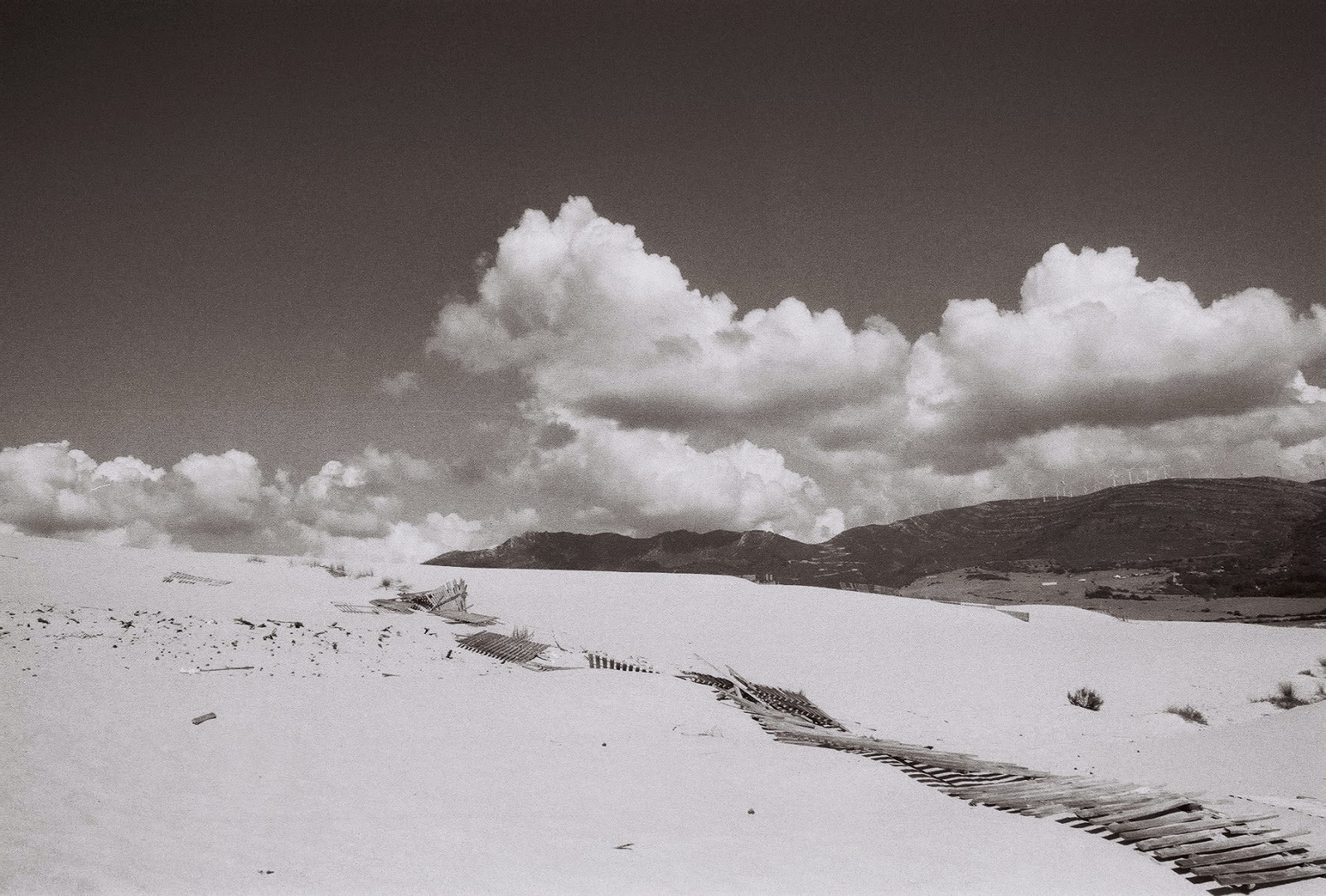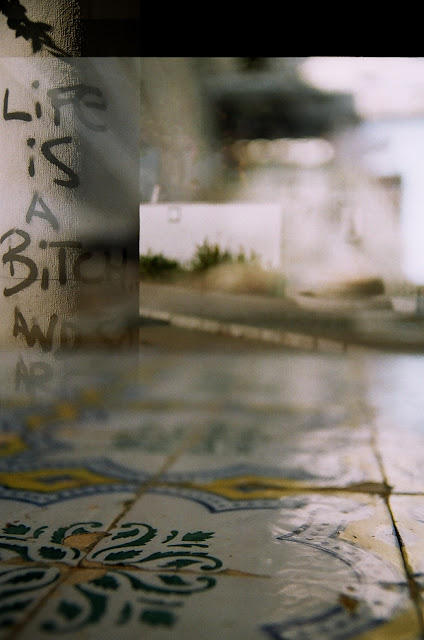A Self Portrait
Self Portrait from Julia Milz on Vimeo.
The day a snowflake got lost in the snow.2m10s
Found Footage
Camera: Jörg Milz, Editing: Julia Milz
“Photographs are signs which don’t take, which turn, as milk does. Whatever
grants to vision and whatever is manner, a photograph is always invisible: It
is not it that we see”. With Camera
Lucida Roland Barthes took on a project very different from his studies within
the field of semiotics: for the first time he divorced from the dictation of
cultural studies, the formula of signifier and signified, and found himself alone
and “disarmed” with regards to examining the photographic image (Barthes, 6). The
motivation for writing this book came when Barthes looked at a picture taken of
his mother “before his time”- the famous Winter
Garden Photograph, and recognized “Her”- a realization disclosed only to
him (we are never permitted a glimpse). This moment led him to the conclusion
that he could write about photography only from an utterly subjective
standpoint. Social science and a scientific study of the photograph lacked what
Barthes set out to establish in Camera
Lucida, “My particularity could never again universalize itself…”(Barthes,
72).
The portrait in the history of photography
always functioned as evidence for the “has been there” and with the emergence
of the bourgeois family portrait has become as signifier of culture and its
specific sets of values, class, status, and a trace of individuality (Sturken
and Cartwright, 24). Furthermore an important expectation has moved into focus:
“And now, smile…and now we are truly happy… forever!” Yet, due to the frame
within which the photographic image operates, everything beyond remains myth-
an aspect highlighted by Christian Boltanski who in his piece Photo Album of Family D. (1971) demonstrated
how images are evidences of appearances but grant us little if not no
information about the realities portrayed. Boltanski decontextualized hundreds
of images and threw them back together, reconstructing “false” family
histories: “When we
see reality we always try to match the image that we have with the reality
before us. I think we don’t see reality, but we always try to recognize
reality” [1]
I find myself somewhere in between Barthes and
Boltanski as I revisit my childhood. There are almost no conventional family
portraits in our photo-albums, nor do those that exist speak much truth about
“us”. Most pictures are episodes of performed smiles in front of the ocean, in
deserts, and around the Christmas dinner table, frozen in time- “Yes, we went
there and of course we were very happy”. Where is Julia? I could not find “Her”
in the neatly arranged albums. Instead, I had to look back in time via hours
and hours of digitally preserved dv-tape footage of me growing up. Behind the
camera: my father. Fast-forwarding through the years of me teething, sleeping, dancing,
and singing, I stumbled over a performance that stands out as a for Julia rare
non-performance: It is my first dance recital. I am a snowflake. I am supposed
to have a blast. My father holds the camera on me- trying to hold on to the fleeting
moments of childish carefree-dom.
But here I am, caring a lot, being very much concerned
about many things: the hands of my dance partners (Oh no! Rejection.) and my
teacher (he did not know my name) and of course that cotton-ball that does not
let me dance carefree to the Ronettes. A piece of my costume- like a piece of
myself falls down amidst the other snowflakes and snowmen jumping in joy. I
forget the importance of performing in order to get that cotton imitation of a
snow particle back to where it belongs. I desperately try to safe this
perfectly assembled costume that was made by the very person who filmed this
tragedy: my father. The feeling of guilt about the destruction of a costume
echoes in an uncanny emotion that I associate with having grown up (especially
after moving away from my family). I ruined your costume/ I am not the cute
little Julia snowflake anymore.
Roland Barthes found in the photograph of his
mother “the impossible science of the unique human being” (Barthes, 71), which
is to some extent what I see in the image of the lost snowflake. This is Julia
then- and this is Julia today, not just a miniature version of myself, but
Julia: looking for an opportunity to shine, the hand to hold onto, and the many
missing pieces- reduced to “what a cute video of your childhood, I wish my
parents had filmed me”. In another video, another year and on the exciting occasion
of a lost tooth, I ask whether I can take a look through the viewfinder myself,
to which the voice behind the camera responds, “Darling, you won’t see much”. Little
did that voice know how much I would “see” in these pixelated fragments of my
childhood twenty years later, a film maker myself, and capable of reassembling my
narrative.
References:
Sturken, Marita,
and Lisa Cartwright. Practices of Looking: An Introduction to Visual
Culture. Oxford ; New York: Oxford UP,
2001. Print.
Barthes,
Roland. Camera Lucida: Reflections on Photography. New York: Hill
and
Wang, 1981. Print.
[1] For an interview with
Christian Boltanski: http://bombsite.com/issues/26/articles/1148 and
see http://epc.buffalo.edu/authors/perloff/boltanski.html
for Marjorie Perloff's compelling comparison between Roland Barthes’ Winter Garden Photograph and Boltanski’s work.




Comments
Post a Comment
What are your thoughts?